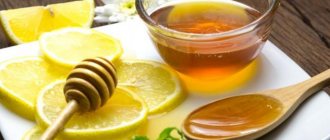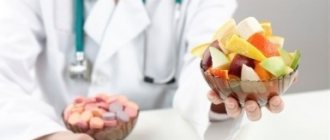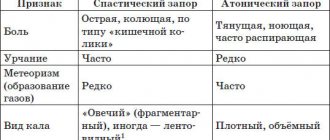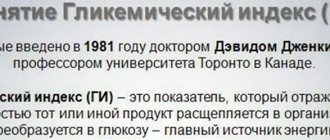Peptic ulcer of the stomach and duodenum is a chronic relapsing disease that is characterized by the formation of ulceration - a defect in the mucous membrane - of the stomach or duodenum. It requires not only drug treatment, but also non-drug prevention and support. Nutritional therapy plays a key role in the treatment and prevention of this disease. It creates optimal conditions for the functioning of the gastrointestinal tract, reduces the likelihood of a negative reaction of the body to medications, provides a gentle mechanical effect on the gastrointestinal mucosa and promotes the proper formation of the food bolus and the absorption of nutrients.
Principles of nutrition for duodenal ulcers
- Under no circumstances should you go hungry. You should eat 5-6 times a day in small portions.
- Dishes are steamed or boiled; they can be eaten pureed or unmashed.
- Baking is possible, but only after preliminary boiling.
- You should eat food at the same time every day. Thanks to a stable daily routine, the body prepares for food intake, and it is better absorbed.
- Eat food slowly and without distraction.
- You will have to limit the amount of salt (up to 6 g per day) and monitor the amount of water you drink. An adult needs 1.5-2 liters of clean water per day.
- Do not irritate the walls of the stomach and intestines with too hot and cold foods.
- The temperature of the food should not exceed 60 degrees and be below 15 degrees.
On a note
Rich broths, baked goods and baked goods, smoked meats, sharp cheese, canned food, snacks (chips, crackers), fast food, alcoholic and carbonated drinks are completely excluded from the diet for duodenal ulcers.
It is undesirable to consume fried, salty, spicy foods, herbs and spices.
Products containing coarse plant fiber are prohibited. These are white and red cabbage, spinach, black bread, turnips, radishes, sorrel, mushrooms, legumes, millet.
Products not recommended for consumption
The transition to a normal diet at home is one way or another accompanied by restrictions. In particular, people with peptic ulcers should exclude the following foods and dishes from their diet:
- fried meat, fish and poultry;
- rich broths and soups, in particular from meat, fish and mushrooms, as well as borscht and cabbage soup;
- radish, radishes, sorrel, raw onions, garlic, turnips, mushrooms and horseradish;
- smoked meats;
- pickled foods, seasonings and sauces;
- fatty dairy products, in particular cheese and cottage cheese;
- soft fresh white and black bread, puff pastry and pastry;
- carbonated drinks, coffee, alcohol.
Specific recommendations are made by the doctor, based on individual indicators, the patient’s condition, as well as the course of the disease, the location of the ulcer, the presence of concomitant and chronic diseases.
List of foods and dishes that are included in the diet for duodenal ulcers
- Puree semolina, rice, oatmeal, buckwheat milk porridge.
- Steam or baked omelette.
- Non-acidic cottage cheese, milk, sour cream (in dishes, for example, soups).
- White bread, freshly baked (no more than 300 g per day) or dried biscuits.
- Cereal, slimy soups, puree soups, soups with pasta.
- Quelles or soufflé made from beef, veal, chicken, rabbit, turkey, lean fish.
- Potatoes, zucchini, pumpkin, cauliflower, broccoli, carrots, beets in the form of puddings and purees.
- Kissels, smoothies, fruit jelly, sweet berries.
- Tea diluted with milk, rosehip decoction, milk jelly, chicory coffee drink with milk, non-acidic compotes.
Myths about nutrition for ulcer patients
Finally, let’s dispel a few myths about the nutrition of ulcer patients.
Actually, there is only one myth: You will have to eat tasteless pureed food! Nutritionists have already reconsidered their previous strictness and do not insist that patients bring all their dishes to the state of liquid puree. The main thing is to adhere to general principles and find a positive aspect in such nutrition.
It would seem that a diet with boiled and steamed products is a green melancholy, but if you look at things philosophically, then where else can you find puddings and quenelles, soufflés and pates, mousses, meringues and cream soups. At least you can have a real feast at home. Well, if you take care of yourself more closely, then the time of culinary retreat can be reduced.
Completeness of the diet
On a note
When prescribing a diet, it is extremely important to take into account the nature and stage of the disease, the condition of other organs and systems.
If the diet is used for a long time, it is necessary to take care of the completeness of the diet. And with this, “Diso®” “Nutrimune” will provide invaluable assistance, which compensates for the protein component of the diet without overloading the gastrointestinal tract.
"Diso®" "Nutrimune" helps to compensate for protein deficiency in dietary nutrition and does not put additional stress on the digestive system.
The product is odorless and does not affect the usual taste and consistency of dishes. It can be added to soups, porridges, jelly and other dishes at any stage of preparation.
Causes
The most common cause of peptic ulcer disease is infection with the bacterium Helicobacter pilory. It can be contracted through saliva through close contact with another person. In patients with duodenal ulcers, helicobacter is detected in 90% of cases; in patients with gastric ulcers, the figure is 50–60%.
In addition to bacteria, stress, poor diet and long-term use of non-steroidal drugs can be a provoking factor. Many people believe that a peptic ulcer is a complication of gastritis, but this is not true: these are different diseases and gastritis does not develop into a peptic ulcer.
Bananas in the diet of ulcer patients
Bananas have an excess of sugars.
This overseas fruit causes some concern when eaten.
After all, the body of people living in harsh climates is not initially adapted to exotic things.
However, banana is still an exception. The harm of this fruit is only in excess of sugars.
Therefore, overweight people should eat bananas little by little. But for ulcer sufferers, this is perhaps one of the healthiest fruits.
According to scientists, banana has a depressing effect on the bacteria Helicobacter pylori. But it is these bacteria that contribute to the appearance and development of ulcers.
The soft consistency of the fruit allows the eaten fruit to have an enveloping effect on the mucous membrane. The rich potassium content in banana helps restore the loss of this trace element after taking diuretics.
Allowed fruits
Bananas do not irritate the gastric mucosa.
You can eat fruits that do not irritate the mucous membranes. These include the following:
- banana;
- avocado;
- pear;
- apple;
- plum.
When choosing which fruits you can eat if you have a stomach ulcer, you must remember that they should not have the following effects:
- cause fermentation;
- provoke allergies;
- be a rich source of sugars;
- actively influence intestinal motility.
You can eat any berries, most importantly in limited quantities.
Diet No. 1
Follow table 1. Diet No. 1 is the recommended standard for patients with peptic ulcer disease. During the period of exacerbation, for ten to fifteen days, adhere to “table 1a”, which involves eating foods in liquid or jelly form.
In the future, it is recommended to switch to “table 1b”, which corresponds to pureed and mushy food. During the period of stable remission, one should be guided by the rules of the standard “diet 1”, which provides for the loose consistency of products, their consumption in grated or well-chopped form.
Basic principles of a balanced diet
A nutritionist will help you plan your diet correctly.
The main condition for good health with an ulcer is a balanced diet.
Fruits are needed, but we must not forget about moderation and the consumption of animal proteins. In their absence, it is not difficult to drive yourself to exhaustion. After all, proteins are the main building material for cells.
It is advisable to consult a doctor - a nutritionist who can competently create a diet for a patient with an ulcer. All healthy foods must be balanced. They must be skillfully combined in the right quantity.
It is necessary to adhere to the recommendations of experts related to the time of day that is optimal for eating fruits. For example, you shouldn’t eat them during the day.
Best in the mornings and evenings, combined with meat or fish. Fruits can be included in light snacks. In any case, we must remember that baked fruits will bring more benefits than fresh ones. People with ulcers should always remember this.
Cooking recipes
The range of permitted and prohibited foods for duodenal ulcers is only at first glance frightening with a large number of changes in the usual diet. Dietary food is a special section of cooking. From a simple set of products it is easy to prepare many tasty and healthy dishes. The main thing in this case is to adhere to the rules for processing and consuming individual ingredients. Here are some delicious and easy recipes:
- Diet pumpkin pudding. To prepare the dish you will need: 150 g pumpkin pulp, 10 g semolina, 10 g honey, 20 g low-fat milk, 140 g apples, 2 eggs. Grind the apples and pumpkin in a blender. Add semolina and milk, bring the mixture to a boil. Add honey and beaten eggs to the prepared mixture. The pudding should be prepared by steaming or in a slow cooker.
- Oatmeal with pumpkin. For 1 cup of rolled oats, prepare 2 cups of skim milk, 1 cup of finely grated pumpkin pulp, butter, two tablespoons of honey. Boil oatmeal with milk until tender. Mix the porridge with pumpkin and leave the mixture for 10-15 minutes, covering the pan with a lid. Add a small amount of butter and also honey.
- Vegetable cream soup. To prepare this dish, prepare the following ingredients: potatoes, carrots, turnips, skim milk, butter. Select the quantity of ingredients at your discretion. Boil all vegetables and chop in a blender. To dilute the mixture to a puree consistency, use vegetable broth and milk. Before eating the soup, place a small piece of butter in the plate.
The duration of a gentle diet depends on the general well-being of the patient. If therapy proceeds without complications, there is a tendency towards recovery, and you can adjust your diet after three to four months. The standard duration of diet therapy is six months.
Menu during an exacerbation period
During the acute period of the disease, you must carefully monitor your diet. Steam or boil food; sometimes you are allowed to bake food. Use a slow cooker - you can use it to make many tasty and healthy dishes that do not contradict the principles of therapeutic nutrition.
- First breakfast. A few soft-boiled eggs, wash down with a glass of milk. Instead of milk, you can drink herbal tea.
- Lunch. Weak herbal tea, fruit juice or milk, fruit for a snack - a baked apple, banana or peach.
- Dinner. Oatmeal soup or oatmeal. As an option, you can use steamed chicken soufflé, as well as fruit or berry jelly.
- Afternoon snack. Creamy curd dessert, vitamin infusion with rose hips. If you want something sweet, you can eat low-fat yogurt.
- Dinner. Milk porridge with rice (pre-mashed), one glass of milk. Another option is vegetable puree or boiled chicken breast.
- After dinner. Before going to bed, it is recommended to drink a glass of milk again, do not eat anything else, so as not to burden the stomach.
Forbidden fruits
If an ulcer has affected the stomach, you should not eat fruits that have an aggressive effect on the mucous membrane of the digestive organs. The following fruits have this effect:
- citrus fruits (due to the ability to provoke allergic reactions, due to the large amount of acid in the composition);
- grapes (due to the ability to stimulate peristalsis and cause fermentation);
- kiwi, peaches, melon (due to the large amount of sugars and fruit acids).
Other fruits can be consumed, but always in limited quantities. Eating too much fruit of any kind is sure to cause harm.
Features of consuming persimmons
Persimmon is one of the fruits that ulcer sufferers can eat without fear, because the amount of fruit acids in it is negligible. At the same time, persimmon is capable of destroying dangerous microbes; it saturates the body with potassium, iron, and copper.
The only limitation is to exclude unripe fruits. They contain too many binders. The most useful are considered to be unpollinated persimmons, which can be recognized by the absence of seeds and light pulp.
Eating pears
Pears have many vitamins.
The rules for eating pears are similar to the rules for eating apples. You can always eat them, you just need to monitor the condition, and if there is an exacerbation, bake the pears.
It is also better not to eat the peel. Fresh fruits are first peeled and then eaten. It is imperative to include pears in your diet, because they are a source of vitamins, the beneficial effects of which can hardly be overestimated:
- Vikasol (K);
- Group B;
- Nicotinic acid (PP);
- Carotenoids (A);
- Ascorbic acid (C), other vitamins in small quantities.
Pears contain useful microelements:









